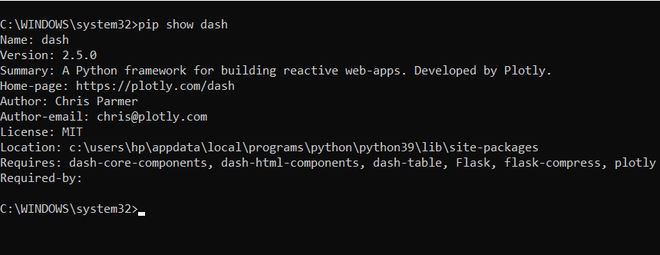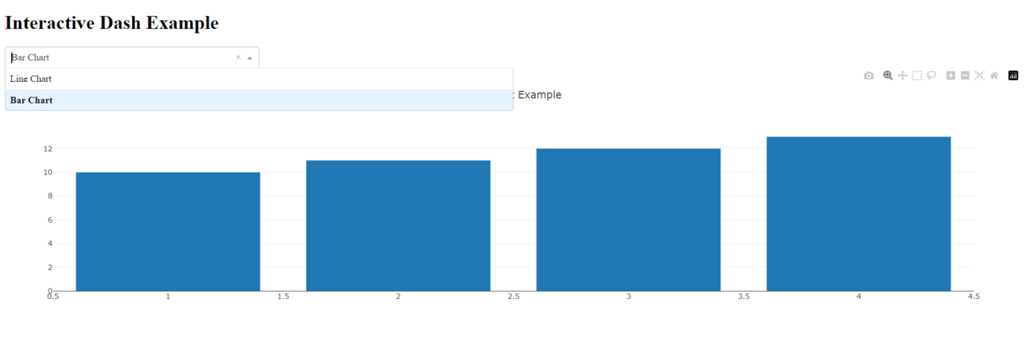
|
|
Dash, a popular Python web framework for building interactive web applications, is continuously evolving with new features, enhancements, and bug fixes. To ensure you are leveraging the latest improvements, updating Dash to the most recent version is crucial. In this article, we’ll walk through the steps to update Dash in your Python environment. In this article, we will see how to update Dash to the latest version in Python. How To Update Dash To Latest Version?Below, is a step-by-step explanation of How To Update Dash To the Latest Version. Step 1: Check Dash Current VersionBefore updating, we can first check the dash version that is currently installed on the device. Below is the command by which we can check this: pip show dash
Output:  pip show dash Step 2: Update Dash to Latest Version in PythonThe primary tool for managing Python packages is pip. To update Dash to the latest version, open your terminal or command prompt and run the following command: pip install dash --upgrade
This command tells pip to install the latest version of the Dash package, upgrading it if a previous version is installed. Output: -660.jpg) dash upgrade Step 3: Verifying the Dash UpdateAfter the update, it’s essential to confirm that Dash has been successfully upgraded. You can use the following command to check the installed version: pip show dash
Output:  pip show dash Basic Code Exampls of DashBelow, are the code example of Dash . Example 1: Create Basic Dash App In this example, below Python code utilizes the Dash framework to create a simple web application with a line chart. It imports necessary libraries, defines a Dash app with a basic layout, and generates a line chart using sample data. When executed, the app runs in debug mode, allowing visualization of the line chart at a specified server address. Python3
To run this example, save the code in a file (e.g., simple_dash_app.py) and execute it. Open your web browser and navigate to http://127.0.0.1:8050/
Output:
Example 2: Dash App with Interactive Components In this example , below Python code defines a Dash web application with an interactive dropdown menu to switch between a line chart and a bar chart. The app includes a callback function that dynamically updates the displayed chart based on the user’s selection. The sample data is initially set for a line chart, and the app runs in debug mode when executed directly. Python3
To run this example, save the code in a file (e.g., interactive_dash_app.py) and execute it. Open your web browser and navigate to http://127.0.0.1:8050/
You should see an interactive Dash app with a dropdown menu to switch between line and bar charts. Output:
|
Reffered: https://www.geeksforgeeks.org
| Python |
Type: | Geek |
Category: | Coding |
Sub Category: | Tutorial |
Uploaded by: | Admin |
Views: | 15 |

